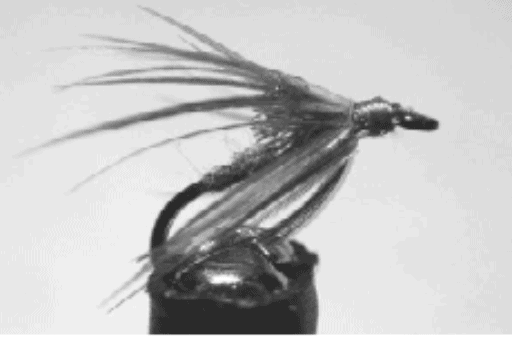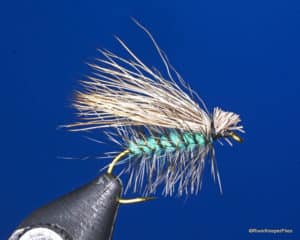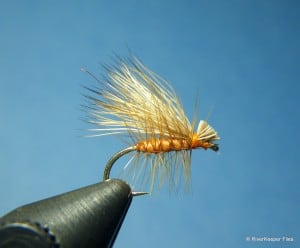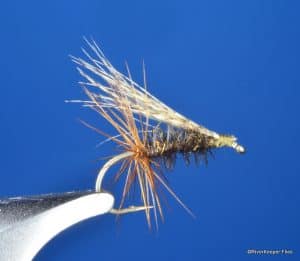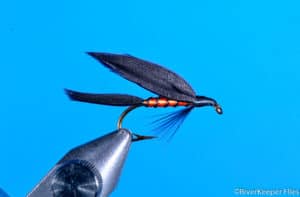This week’s Throw Back Thursday Fly is the Brassie. Here is a fly I tied many years ago. I found the fly pattern in Randall Kaufmann’s Nymphs book. As you can tell, it’s a simple pattern to tie.

The Brassie was developed by Gene Lynch in the 1960’s. Lynch among other South Platte River fly tyers in Colorado were experimenting with copper wire bodies. I believe some of the early flies used Brass plated wire, hence the name Brassie.
I’ve never heard of Brass plated wire, I used copper wire.
If you’re a fly tyer and wondered why there was a “brassie” size copper wire (among a myriad of other colors these days) this fly is the reason. The Brassie size wire is between the small and medium and is best used for flies in the 18 – 22 range. It helps sink the fly faster in the water column. In addition, the wire provides an appearance of segmentation.
You can use dubbing as shown in the picture or peacock herl for the thorax/head. Another option is to add a bead head.
The Brassie can imitate caddis larva, caddis pupa, or midge pupa.
